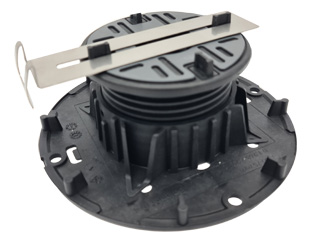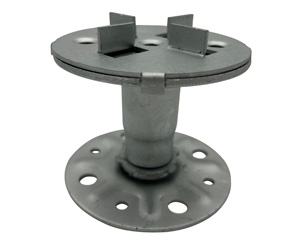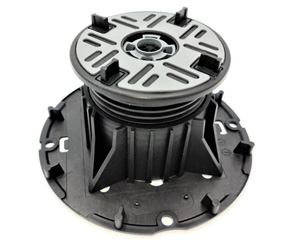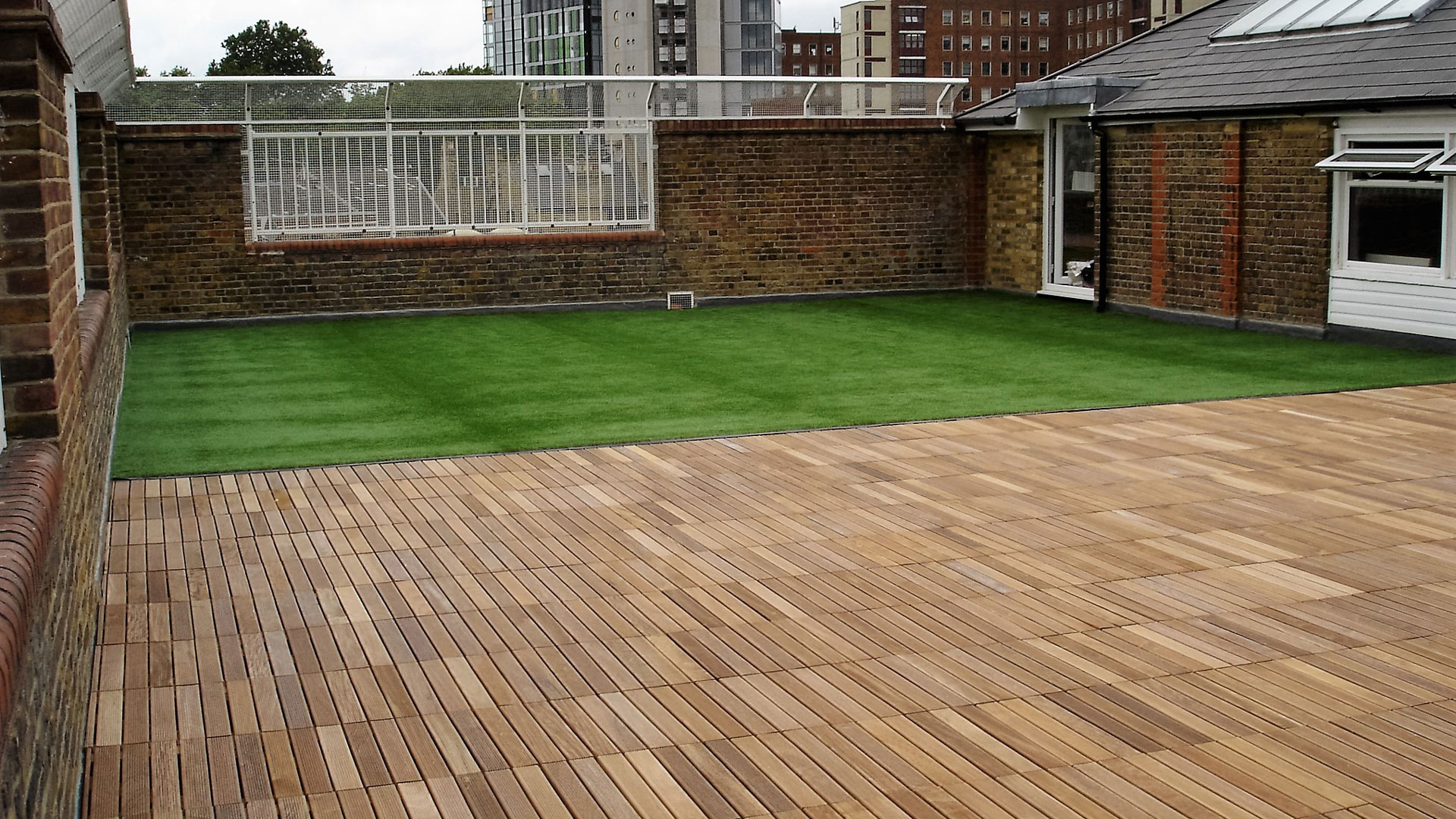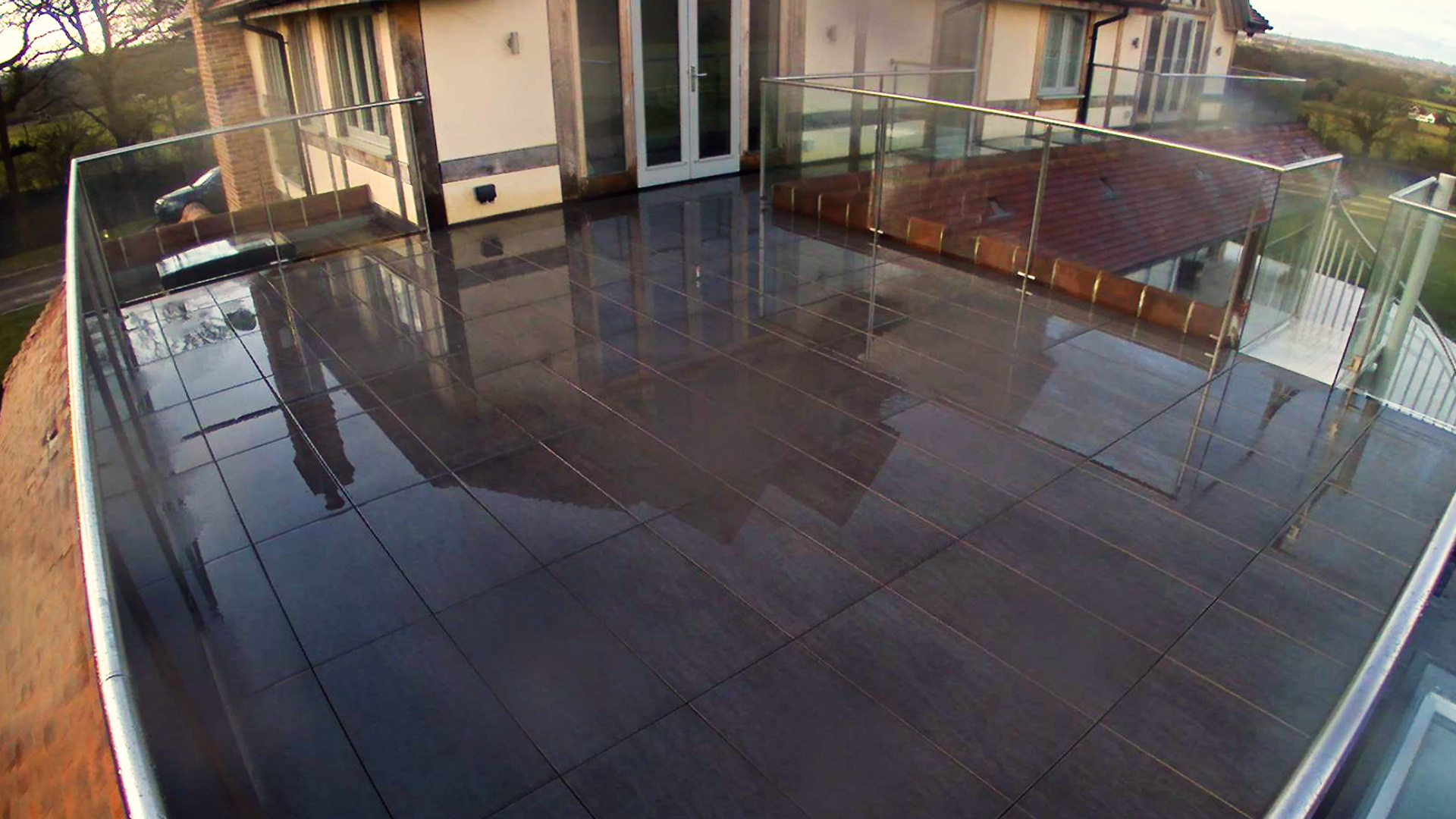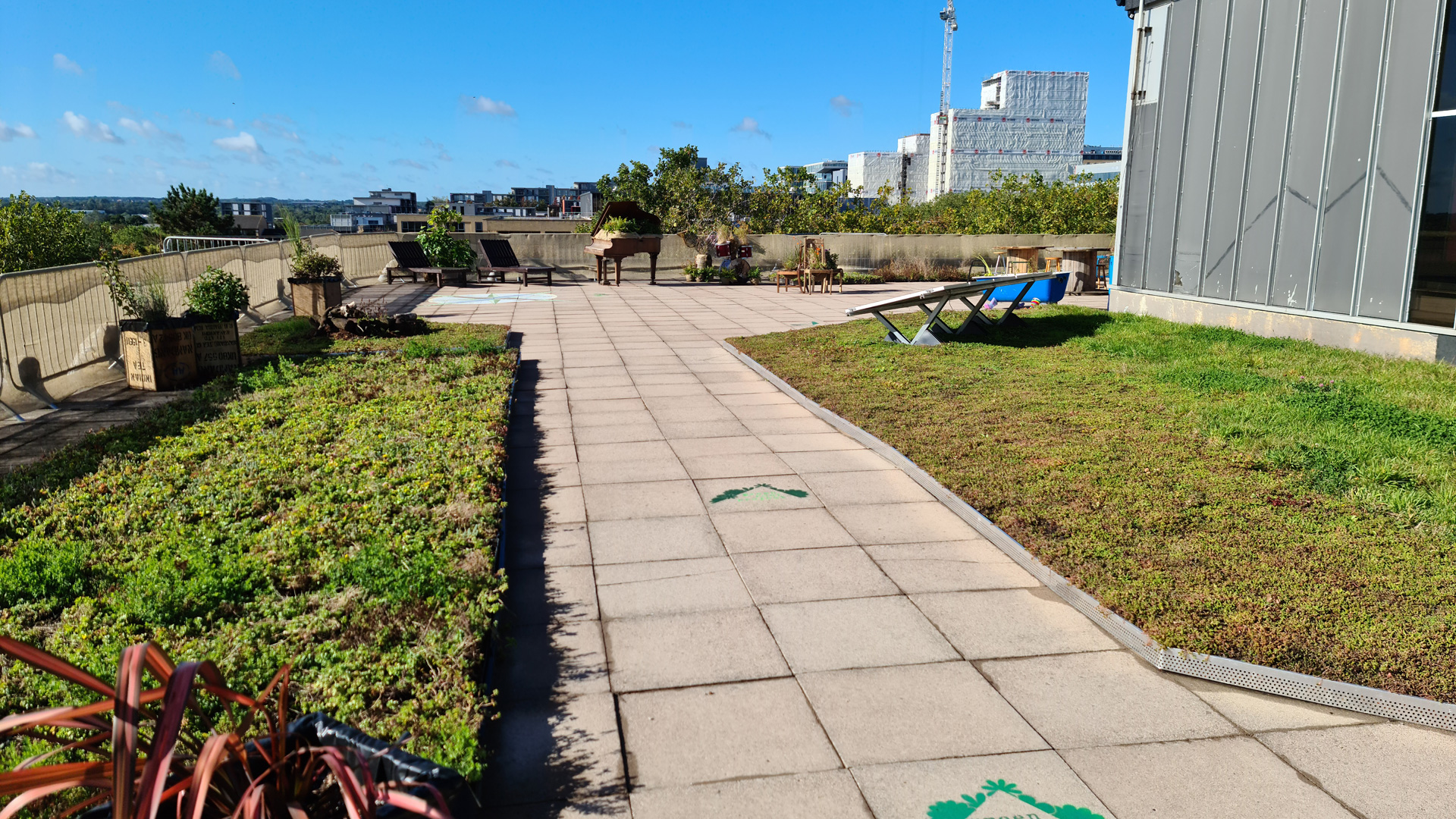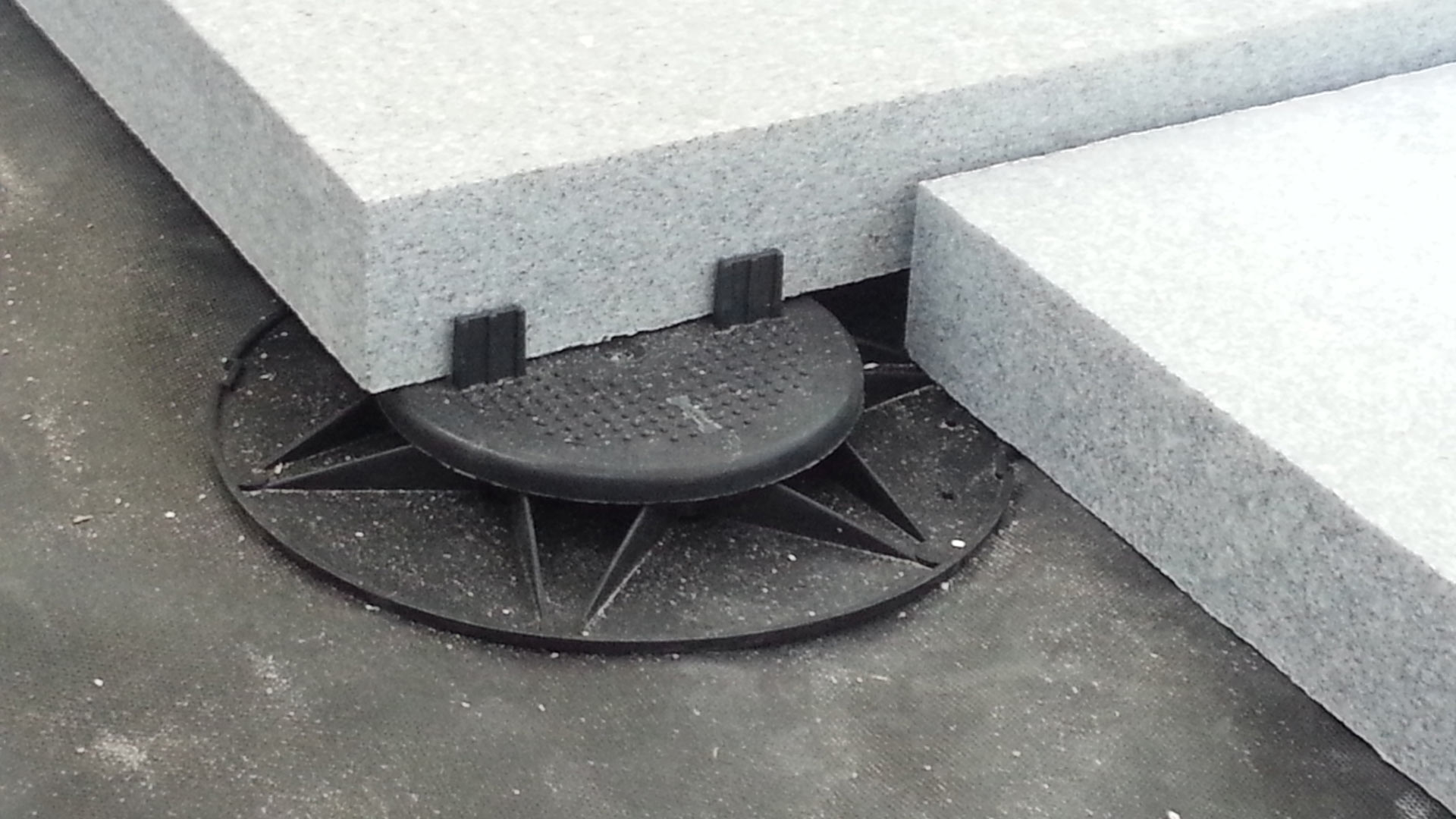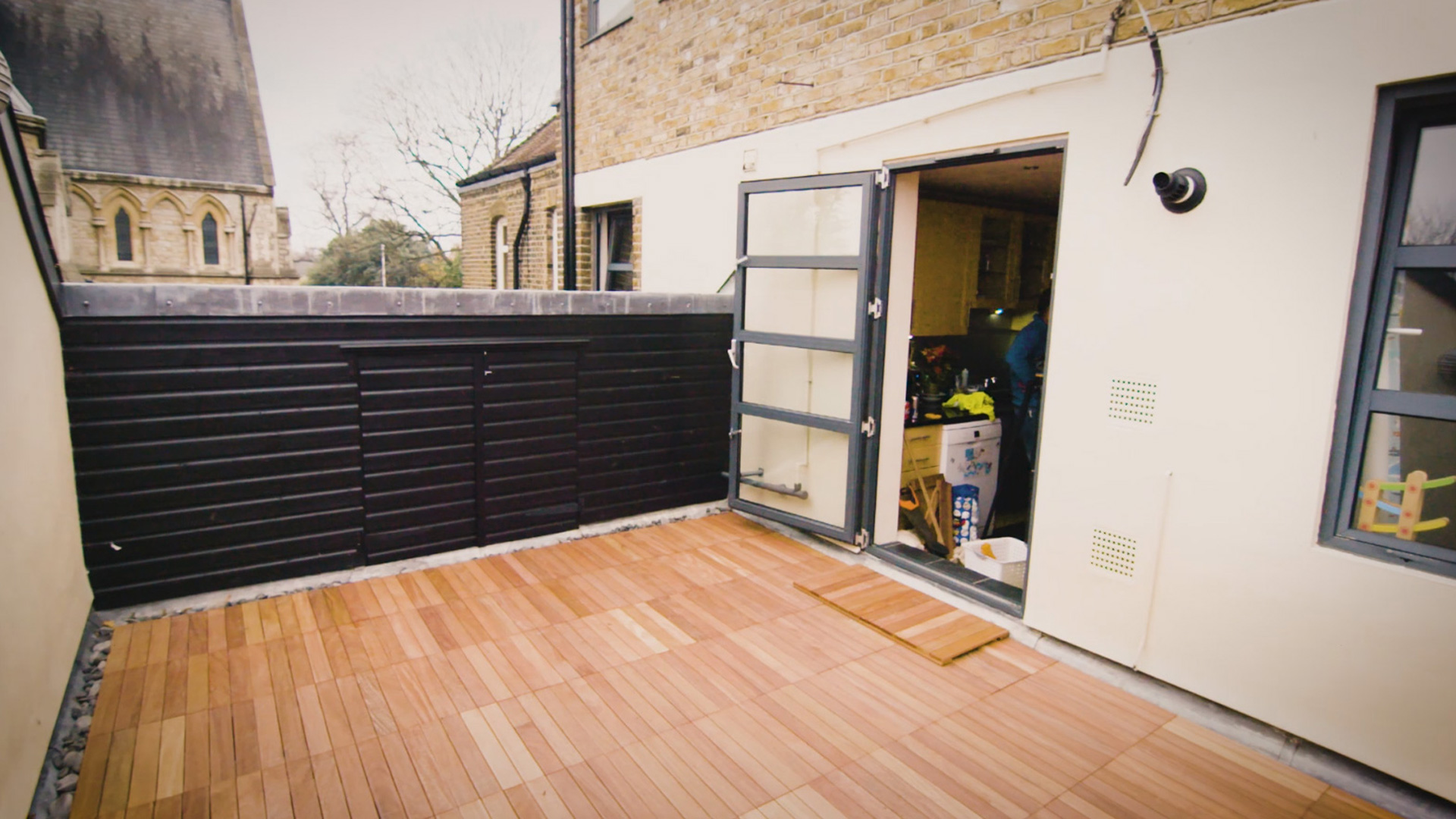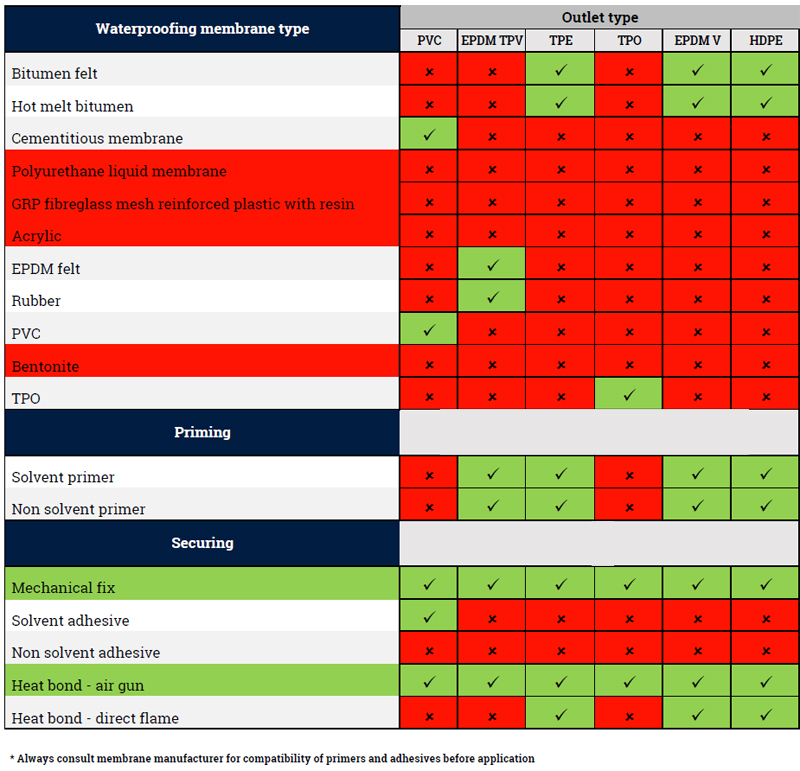In recent years, fire safety in construction has rightly become a top priority across the UK. New legislation, regulatory updates, and increased scrutiny following high-profile incidents have all led to a significant shift in how buildings are designed, specified, and constructed – particularly when it comes to non-combustible materials.
One area receiving more attention is the fire performance of pedestal and support systems used for suspended paving, decking, and green roof installations on roofs, balconies, podiums, and terraces. While these components may seem minor in the overall structure, their material composition and fire behaviour can have a major impact on overall safety and compliance.
At Wallbarn, we are at the forefront of developing and supplying fully compliant fire-rated pedestal systems to meet the rigorous standards demanded by today’s construction professionals. This blog explores what those fire safety standards are in the UK, why they matter, and how to ensure your support system meets all relevant requirements.
Why Are Fire Safety Standards So Important for Rooftop Supports?
In multi-storey buildings, especially those with rooftop terraces, communal podium decks, or green roof systems, the risk of fire spreading vertically or laterally can be significant. Rooftop installations can involve a mix of materials – paving slabs, timber or composite decking, insulation, and vegetation – all of which must be considered in terms of combustibility and fire spread potential.
Paving and decking pedestals support these surfaces and create voids beneath, which, if improperly managed, can contribute to the passage of fire. That’s why the fire performance of the pedestal itself is essential, especially in residential buildings above 11 metres in height, where the use of combustible materials is heavily restricted or outright banned.
The Key Legislation: Approved Document B
The principal guidance for fire safety in England and Wales is Approved Document B of the Building Regulations. This outlines requirements for the fire resistance of materials used in external wall systems, balconies, terraces, and roof elements.
Following updates in 2018 and 2020, the following apply:
1. Ban on Combustible Materials in Relevant Buildings
-
Applies to buildings over 18 metres in height (11 metres in some jurisdictions, depending on building type and purpose).
-
The external wall construction, including attachments such as balconies and terrace surfaces, must be composed of materials achieving Euroclass A1 or A2-s1,d0 fire ratings as classified under BS EN 13501-1.
2. Application to Roof Terraces and Balconies
-
Rooftop features such as podium decks, terraces, and green roofs are included within the scope of the regulation where they form part of the external wall or attachment.
-
Pedestals, supports, decking joists, and void formers must meet the fire rating requirements if used on balconies or terraces in these buildings.
This means that plastic or composite pedestal systems, which are often rated Euroclass B or lower, are not permitted in these high-risk areas.
What Is the Euroclass Fire Rating System?
The Euroclass system (BS EN 13501-1) is the European classification method for the fire performance of construction products and building elements. It evaluates:
-
Combustibility
-
Flame spread
-
Smoke production
-
Production of flaming droplets/particles
The most relevant classifications are:
-
A1 – Non-combustible. No contribution to fire at any stage.
-
A2-s1,d0 – Limited combustibility. Very limited smoke and no flaming droplets.
-
B-F – Increasing levels of combustibility and contribution to fire.
Only A1 and A2-s1,d0 materials are deemed suitable for use in the external walls and associated components of high-rise buildings. Therefore, fire-rated pedestal supports used in rooftop and green roof installations must fall within these categories.
Wallbarn offers a specialist range of fire-rated pedestals and supports designed to meet Euroclass A standards, helping architects and contractors stay fully compliant while still benefiting from adjustable, modular support systems.
What Makes a Pedestal Fire-Rated?
To be classified as fire-rated to Euroclass A1 or A2, the pedestal system must be made from non-combustible materials, typically metal such as aluminium or galvanised steel. These materials do not ignite or produce significant smoke or heat in the event of a fire.
In contrast, traditional pedestal systems made from polypropylene, rubber, or composite plastic do not meet these criteria and pose a fire risk in restricted applications.
Wallbarn’s Class A-rated paving supports retain all the benefits of adjustability, weight-bearing capacity, and ease of installation, while delivering full fire compliance for high-rise developments, commercial buildings, and green roof paving zones.
The Role of Pedestals in Green Roof Design and Safety
Green roofs are praised for their environmental performance – providing natural insulation, encouraging biodiversity, and managing rainwater runoff. However, any rooftop system must also be safe and robust in the face of fire risk.
Within extensive and intensive green roof systems, paved zones are often introduced for maintenance access, social use, or visual contrast. These paved areas typically sit on raised decking or tile systems supported by pedestals. If the supports beneath are combustible, they become a hidden risk, especially under the dry vegetation sometimes present on green roofs in summer.
By specifying non-combustible, fire-rated pedestal supports, green roof installers can ensure their build-up complies with fire safety regulations and offers peace of mind.
To learn more about how our systems integrate with green roofing applications, visit our full green roof range.
Common Use Cases for Fire-Rated Pedestals
Fire-rated pedestals are now commonly required for:
-
Rooftop terraces on residential towers
-
Podium decks over underground car parks
-
Paved access paths within green roofs
-
Public realm balconies and courtyards
-
Walkways and platforms above waterproof membranes
In each of these applications, using Class A-rated materials is essential not only for safety but also for insurance, planning approval, and building sign-off.
Summary: Best Practice and Full Compliance
To summarise, the UK fire safety standards for pedestals and supports are increasingly clear: combustible materials are not permitted in high-risk applications, especially those on external walls or attached roof surfaces in tall buildings.
Specifiers and contractors must ensure the pedestal systems used for paving and decking in these zones are fully compliant with Euroclass A1 or A2-s1,d0 classifications. This typically requires the use of metal-based supports specifically engineered for fire safety.
Wallbarn is proud to offer an extensive fire-rated pedestal range that provides:
-
Euroclass A-rated performance
-
Full compatibility with paving and green roof systems
-
Modular adjustability and ease of installation
-
Support for both stone tiles and porcelain slabs
By making fire safety a core part of your design strategy, you not only meet today’s regulations – you help shape a safer, more resilient built environment for the future.


